Removal Procedure
- Relieve the fuel system fuel pressure. Refer to Fuel Pressure Relief .
- Drain the fuel tank. Refer to Fuel Tank Draining .
- Raise the vehicle. Refer to Lifting and Jacking the Vehicle in General Information.
- Loosen the fuel filler hose clamp (1) at the fuel tank (3).
- Remove the fuel tank filler hose from the fuel tank.
- Disconnect the fuel feed, the fuel return and the evaporative emission (EVAP) pipes quick-connect fittings at the fuel tank. Refer to Plastic Collar Quick Connect Fitting Service .
- Remove the exhaust pipe hangers in order to allow the exhaust system to drop slightly.
- Separate the 2 halves of the EVAP fresh air hose at the splice.
- Remove the fuel tank shield push pins (2) and the fuel tank shield (3).
- Support the fuel tank with a suitable jack.
- Remove the fuel tank strap bolts (2).
- Remove the fuel tank from the vehicle and place the fuel tank in a suitable work area.
- Remove the EVAP canister. Refer to Evaporative Emission Canister Replacement .
- Remove the fuel feed, the fuel return, and the EVAP pipe assemblies and the insulator clips from the fuel tank.
- Remove the insulator pad from the fuel tank. Note the location of the insulator pad for the installation.
Notice: Cap the fittings and plug the holes when servicing the fuel system in order to prevent dirt and other contaminants from entering the open pipes and passages.
Important: Always maintain cleanliness when servicing the fuel system components.
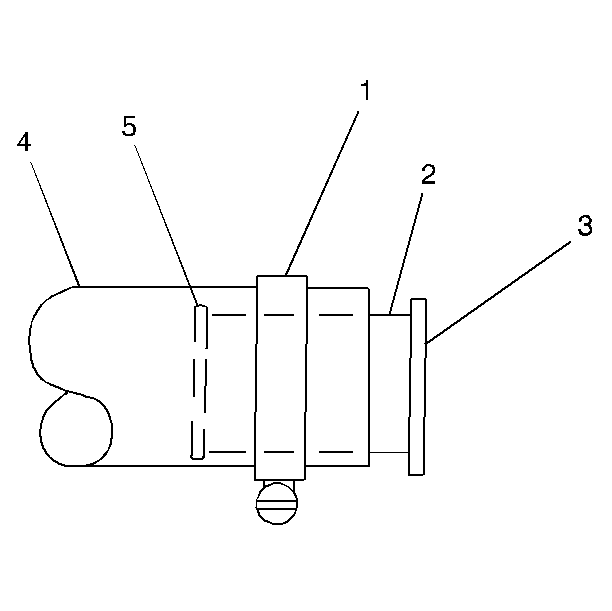

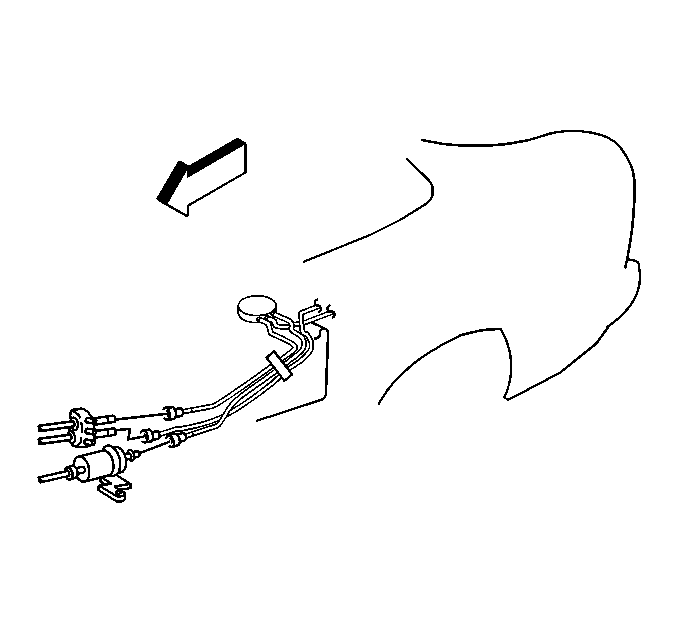
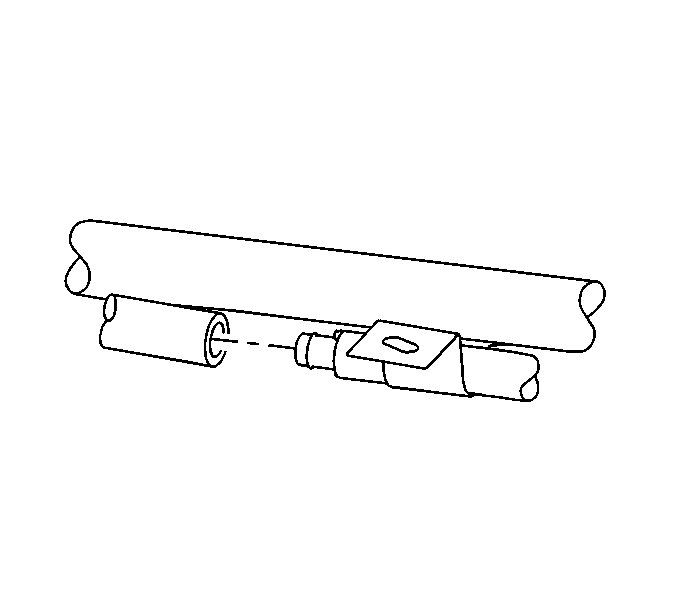
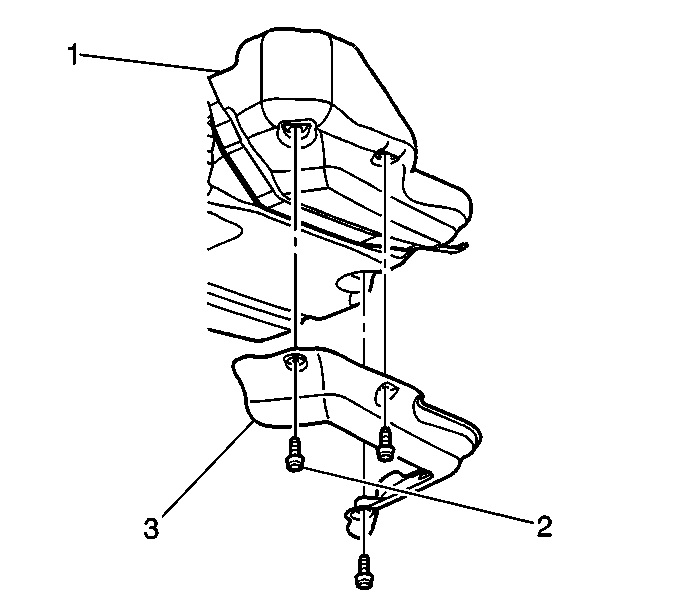

Notice: Do not bend the fuel tank straps as this may damage the straps.
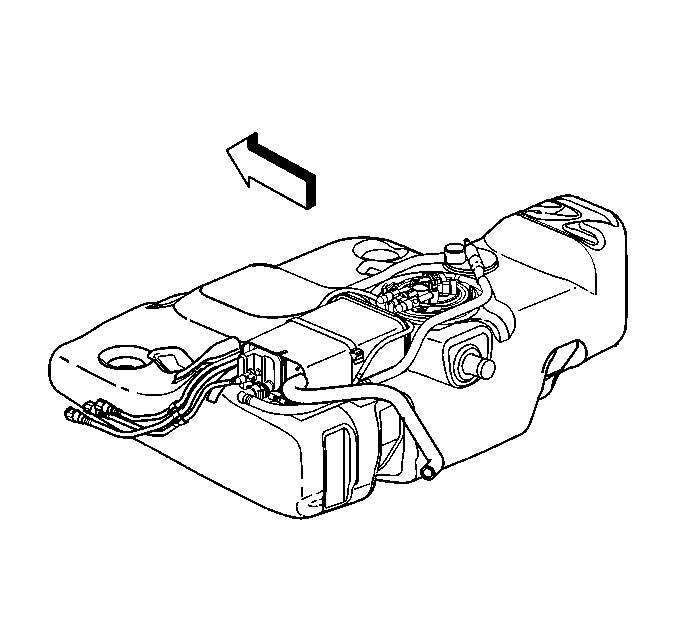
Installation Procedure
- Install the insulator pad on the fuel tank.
- Install the fuel feed, the fuel return, and the EVAP pipe assemblies and the insulator clips.
- Install the EVAP canister. Refer to Evaporative Emission Canister Replacement .
- Install the fuel tank to a suitable jack.
- Raise the fuel tank to the original position.
- Install the fuel tank strap bolts (2).
- Position the tank shield (3), and install the push pins (2).
- Connect the fuel feed, the fuel return and the EVAP pipes quick-connect fittings at the fuel tank. Refer to Plastic Collar Quick Connect Fitting Service .
- Install the 2 halves of the EVAP fresh air hose at the splice.
- Install the fuel tank filler hose to the fuel tank.
- Fully seat the filler hose (4) on fuel tank port (2).
- ensure the clamp (1) is properly located on tank port between the bead (5) and the tank (3).
- Raise the exhaust to the original and install the exhaust pipe hangers.
- Lower the vehicle.
- Install the fuel sender assembly. Refer to Fuel Sender Assembly Replacement .
- Add fuel and install the fuel filler pipe cap.
- Connect the negative battery cable. Refer to Battery Negative Cable Disconnection and Connection in Engine Electrical.
- Inspect for fuel leaks using the following procedure:

Notice:
• Do not attempt to straighten kinked nylon pipes. Replace any kinked
nylon pipes in order to prevent damage to the vehicle. • Do not attempt to repair sections of nylon pipes. Replace damaged
nylon pipes. • Replace the vapor pipes with original equipment or parts that
meet GM specifications. • Replace the vapor hoses with original equipment or parts meeting
GM specifications. Use only reinforced fuel-resistant hose identified with
the word Fluoroelastomer or GM 6163M on the hose.

Notice: Use the correct fastener in the correct location. Replacement fasteners must be the correct part number for that application. Fasteners requiring replacement or fasteners requiring the use of thread locking compound or sealant are identified in the service procedure. Do not use paints, lubricants, or corrosion inhibitors on fasteners or fastener joint surfaces unless specified. These coatings affect fastener torque and joint clamping force and may damage the fastener. Use the correct tightening sequence and specifications when installing fasteners in order to avoid damage to parts and systems.
Tighten
Tighten the bolts to 48 N·m (35 lb ft).





Tighten
Tighten the fuel tank filler pipe hose clamp to 2.5 N·m (22 lb in).
| 18.1. | Turn ON the ignition, for 2 seconds. |
| 18.2. | Turn OFF the ignition, for 10 seconds. |
| 18.3. | Turn ON the ignition. |
| 18.4. | Inspect for fuel leaks. |
